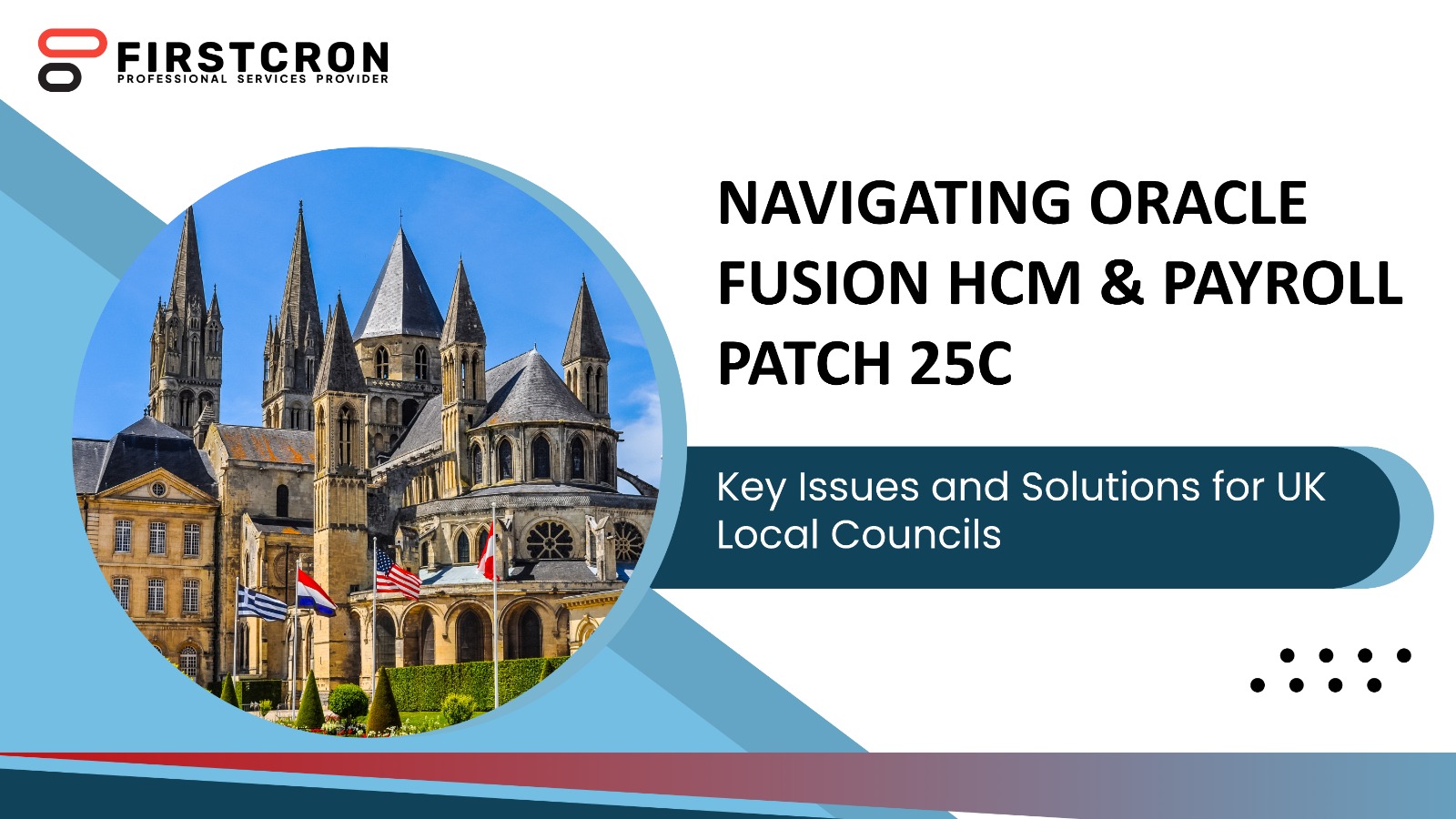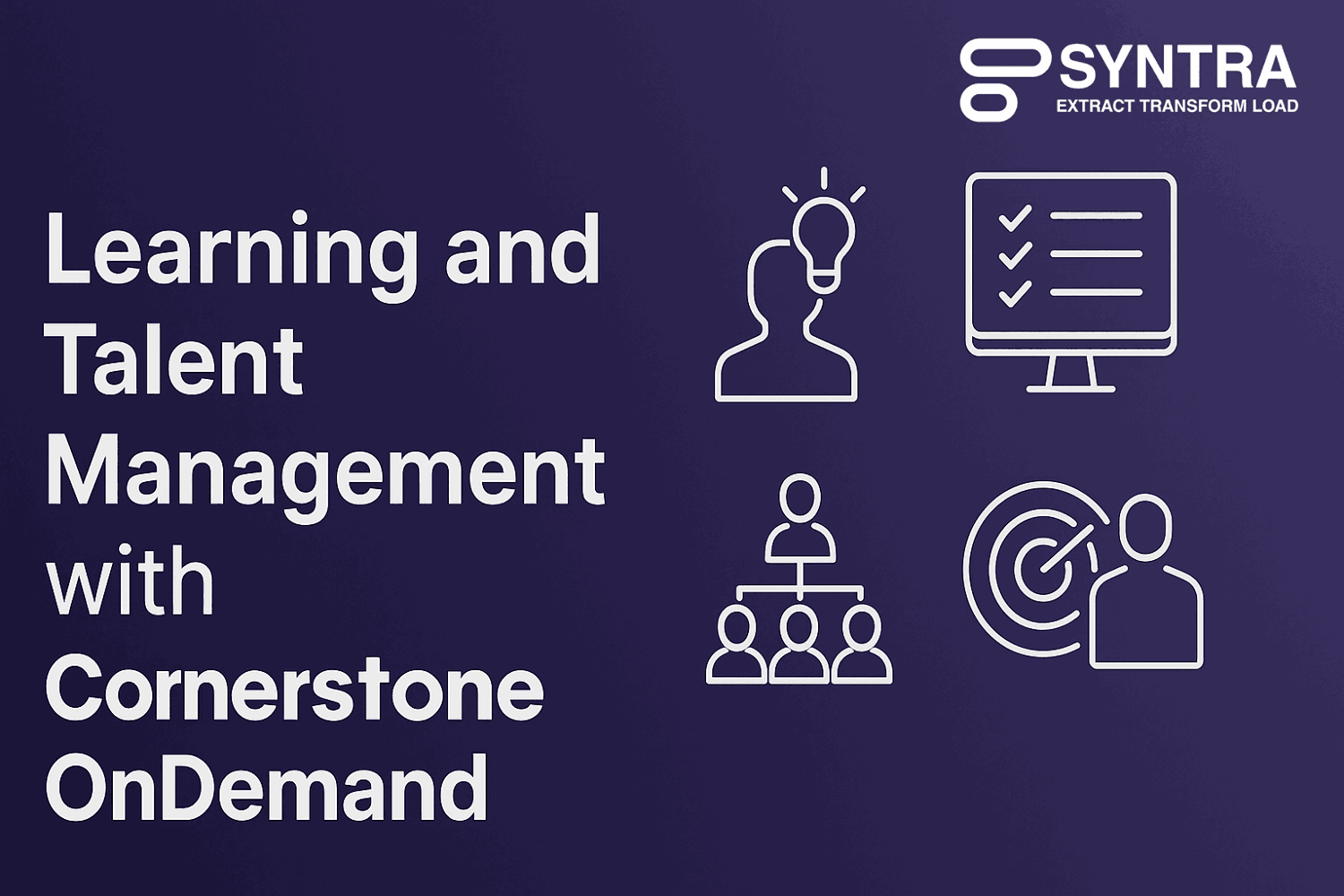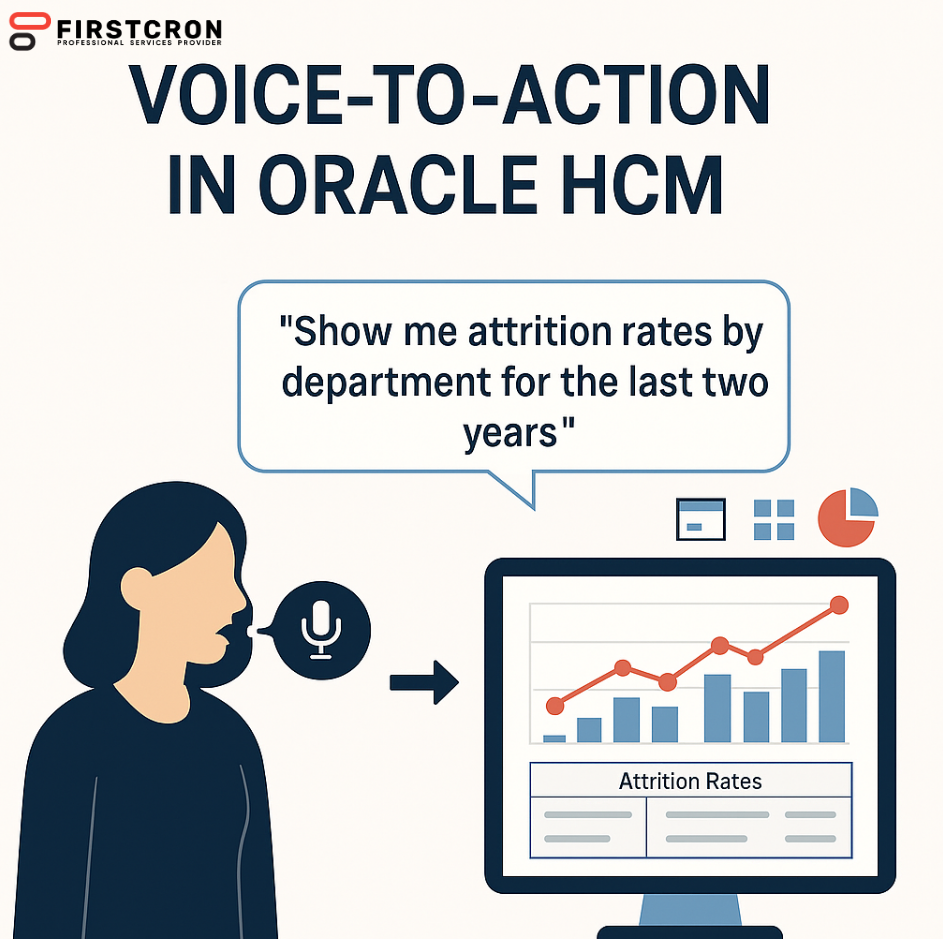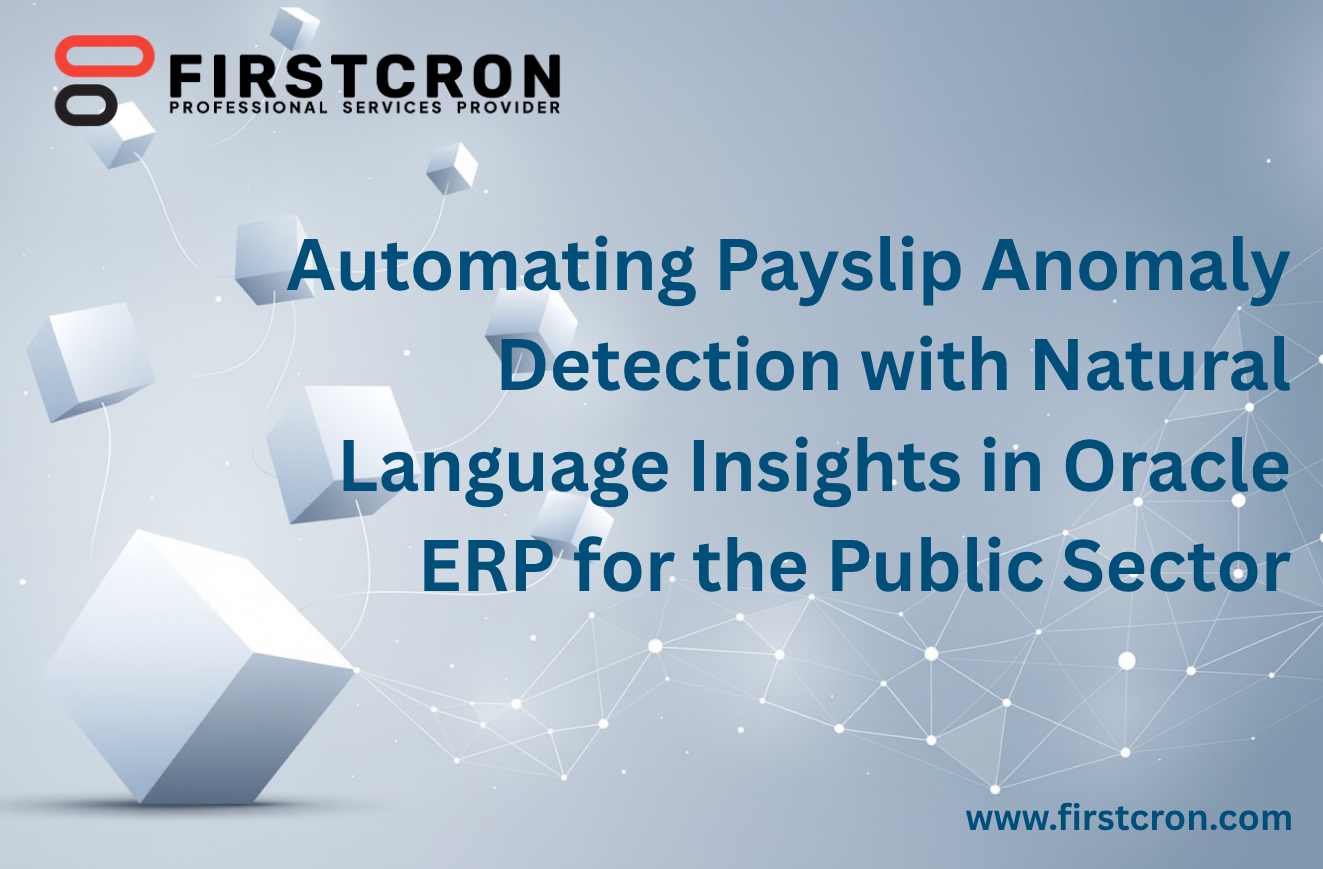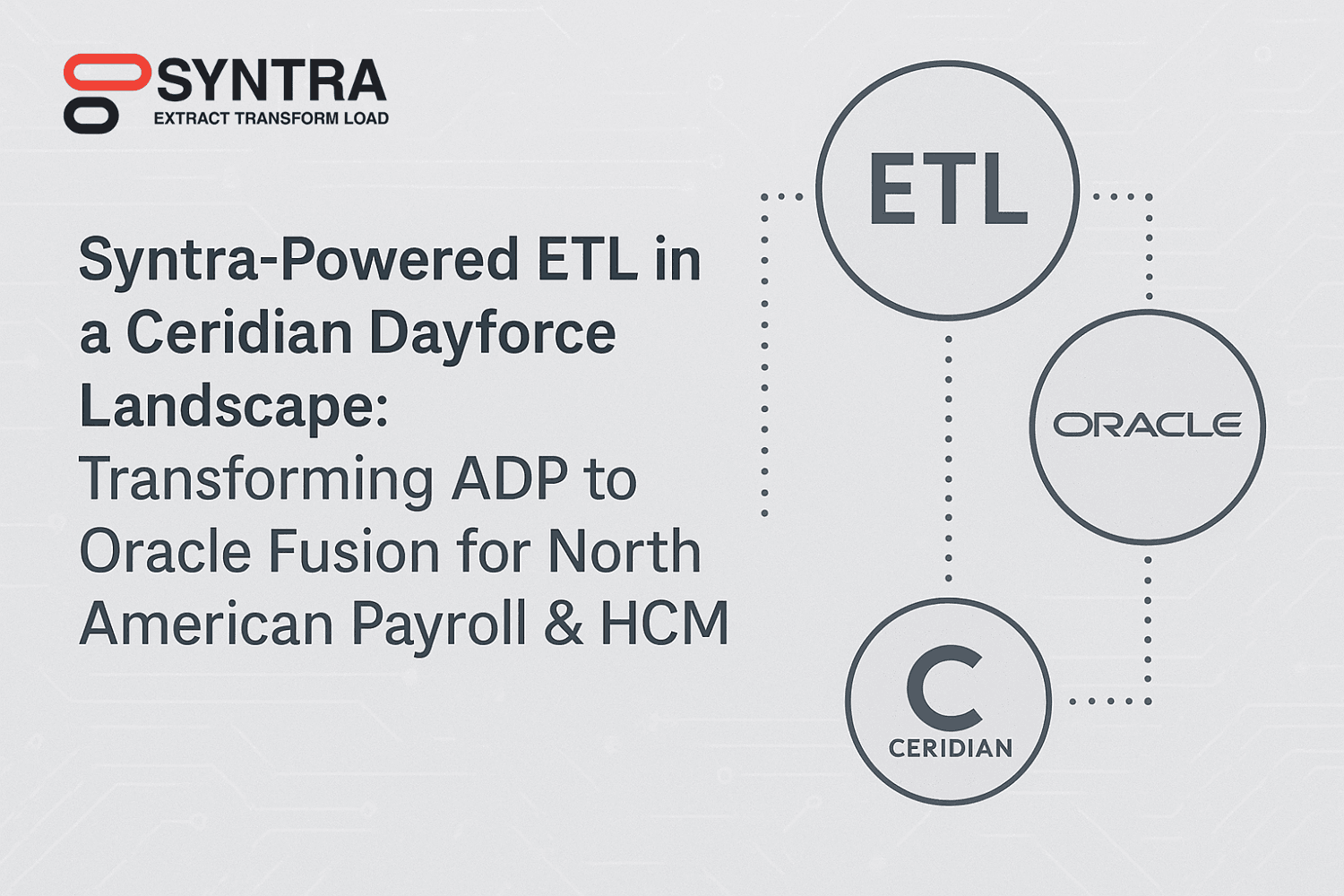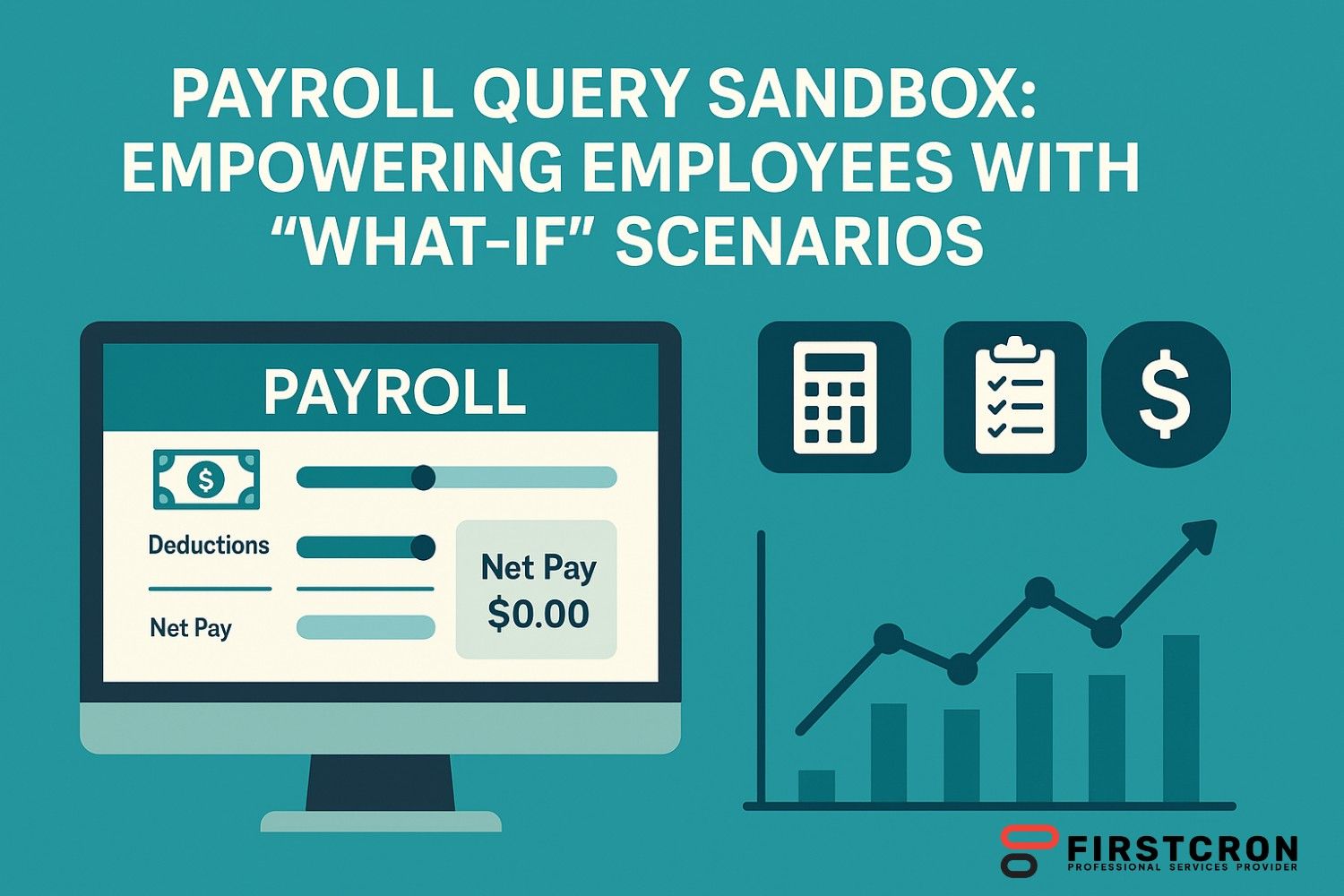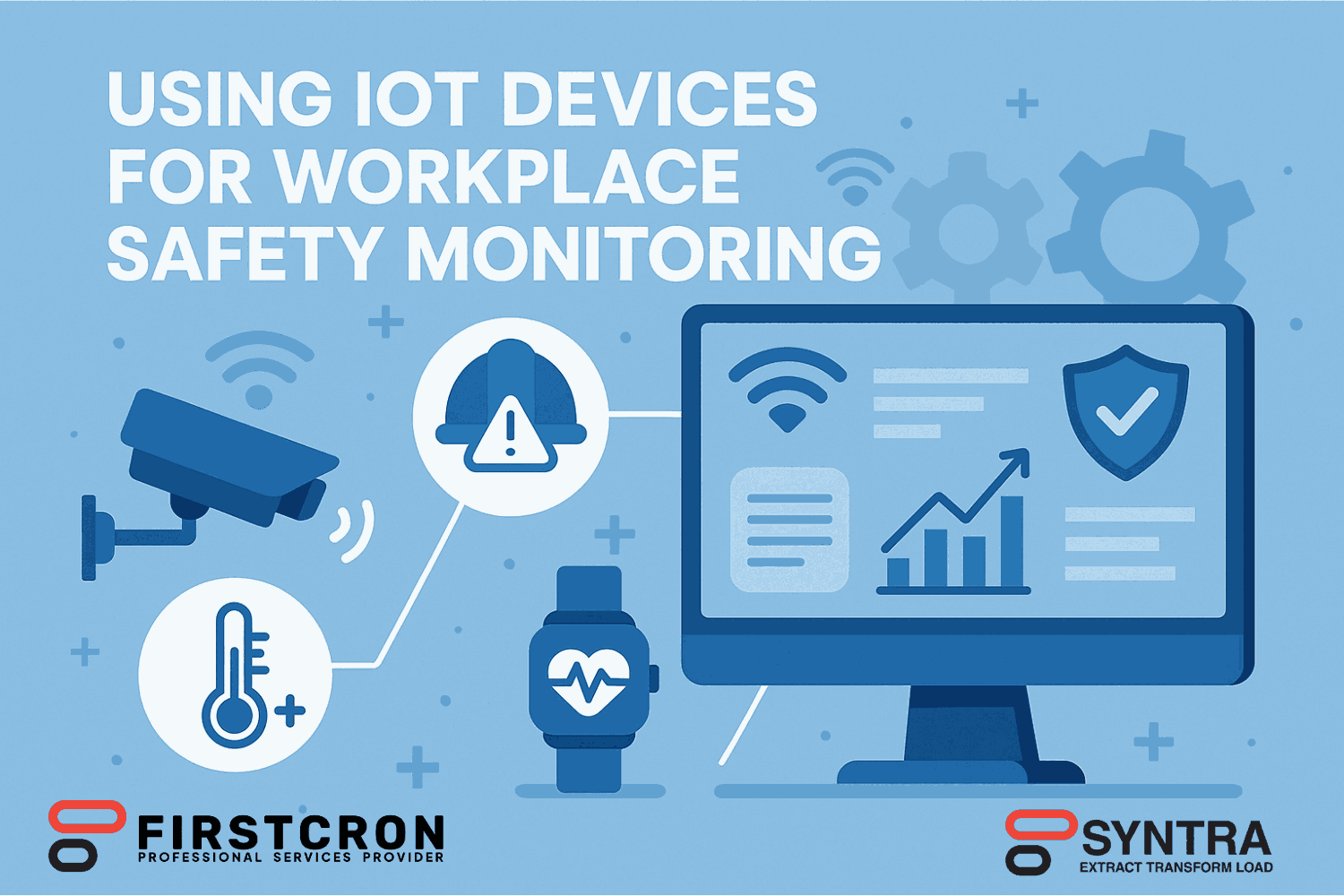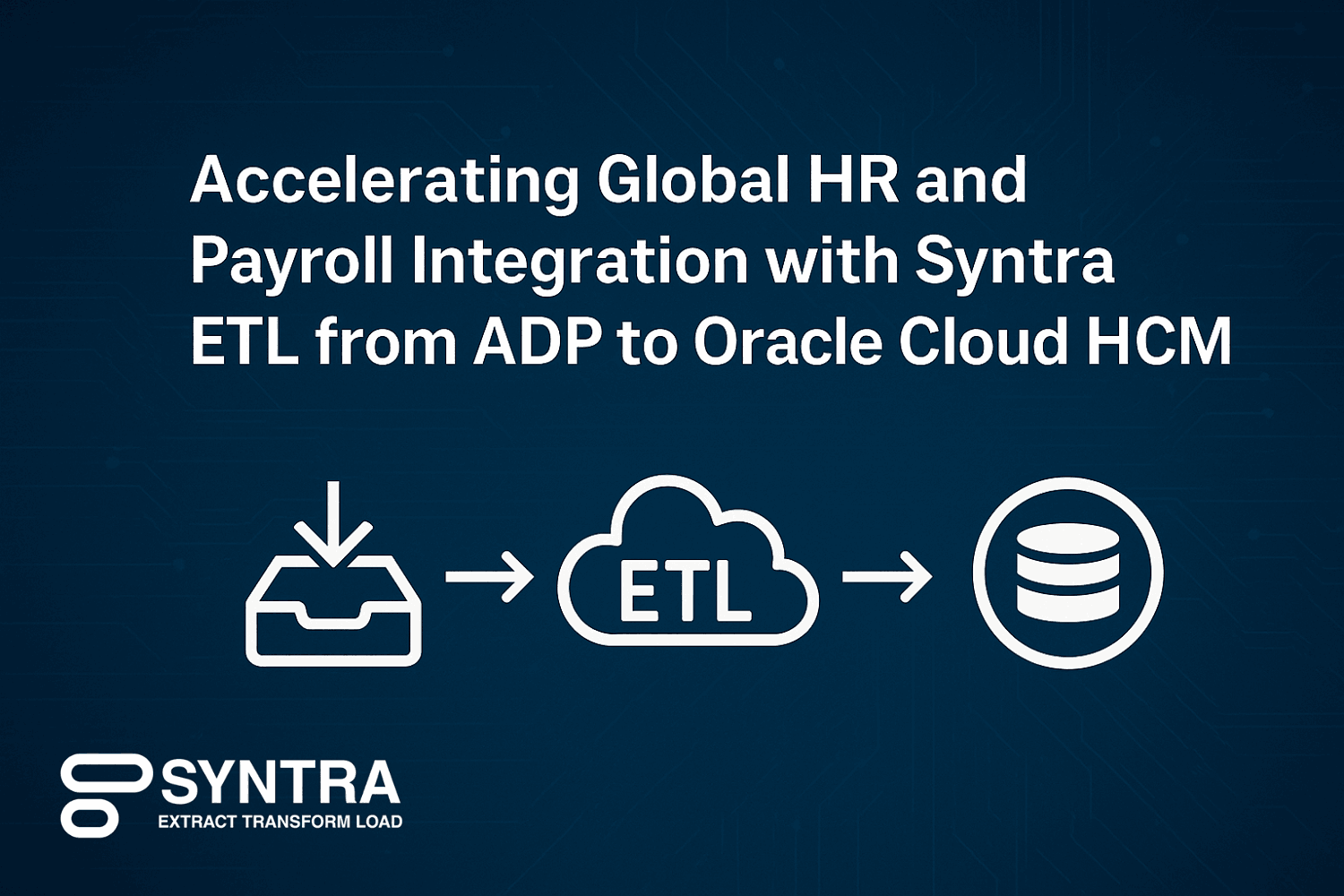
Talent acquisition and recruitment are at the heart of every organization’s growth strategy. Once candidates are hired, a smooth flow of HR and payroll data becomes crucial for onboarding, payment, and compliance. This is where Syntra comes in. Syntra is a specialized ETL (Extract, Transform, Load) tool that automates the transfer of core HR and payroll data from ADP systems to Oracle Fusion. By doing so, it eliminates manual intervention, ensures data consistency, and saves significant time and effort.
In many organizations, transferring HR and payroll information between systems can be a time-consuming, error-prone task. Syntra bridges this gap by automating data extraction, applying precise transformations, and loading the data directly into Oracle Fusion. This creates a seamless connection between HR operations and financial systems, improving the overall efficiency of the recruitment and employee management process.
In this blog we’ll cover
Understanding Syntra ETL
Syntra follows the ETL process that defines how data moves between systems. It extracts data from ADP, transforms it to match Oracle Fusion’s structure, and loads it into the target environment. During extraction, Syntra collects data such as employee details, payroll records, compensation elements, and attendance logs. The transformation stage reformats and maps this data into the correct structure expected by Oracle Fusion. Finally, the loading process places the cleansed and verified data into the Oracle Fusion system for operational use.
The transformation stage is particularly important because data definitions, field types, and validation rules differ between ADP and Oracle Fusion. Without automated transformation, teams would spend days manually fixing errors and mismatches. Syntra’s built-in mapping logic and validation checks ensure that these transformations are accurate, traceable, and aligned with the organization’s policies.
Important Data Objects Requiring Transformation
Certain HR and payroll data objects undergo complex transformation when being transferred from ADP to Oracle Fusion. The employee master record, for example, includes identifiers, job information, and departmental mapping that must be restructured to fit Oracle’s standards. Payroll data, including earnings, deductions, and benefits, is another area requiring detailed mapping between different code sets and calculation rules.
Taxation details, such as federal and state tax codes, withholding categories, and exemptions, also require conversion to Oracle’s tax frameworks. Time and attendance records from ADP must be normalized so that hours, shifts, and absence data match Oracle’s time card format. Organizational hierarchies, including departments and cost centers, must be synchronized to ensure accurate reporting and payroll distribution.
Together, these transformations guarantee that the HR and payroll data moved into Oracle Fusion is accurate, current, and compliant with organizational and legal standards.
How Syntra Saves Time And Effort
Syntra’s automation removes the repetitive tasks that once required hours of manual effort. It uses ready-made templates and transformation rules that are preconfigured for ADP and Oracle Fusion data models. This ensures that organizations do not have to start from scratch when setting up their data pipelines. The tool includes built-in validation, which automatically identifies incomplete or incorrect data before it is loaded, reducing the risk of payroll errors or compliance issues.
Syntra also supports incremental data loads, meaning only the changes made since the last update are transferred. This approach significantly reduces processing time and system load. Each step of extraction, transformation, and loading is logged and auditable, giving HR and finance teams complete visibility into their data flow.
In essence, Syntra transforms a complex integration into a manageable, transparent process. This helps HR and recruitment teams maintain data integrity, shorten onboarding timelines, and keep payroll operations smooth and accurate.
Key Benefits Of Syntra
- Preconfigured templates for ADP and Oracle Fusion reduce implementation time
- Automated data validation ensures accuracy before loading
- Incremental data loading enhances efficiency and speed
- Centralized monitoring and error tracking improve transparency
- Flexible customization supports complex HR structures and global payroll needs
These benefits make Syntra an indispensable part of the HR technology stack for organizations that rely on both ADP and Oracle Fusion.
Transformation Table
| ADP Field | Transformation Applied | Oracle Fusion Field |
|---|---|---|
| Oracle Fusion Field | EmployeeID E12345, JobCode JC01, Dept D45 | PersonNumber E12345, Assignment Job Sales Executive |
| HireDate 2023 08 15, LocationCode L10 | Date format converted, LocationCode L10 mapped to Phoenix Office | StartDate 2023 08 15, WorkLocation Phoenix Office |
| EarningType BONUS VAR, EffectiveDate 2023 09 01 | EarningType mapped to Variable Pay Bonus, date validated | PayElement Variable Pay Bonus, EffectiveFrom 2023 09 01 |
Conclusion
For modern organizations, success in talent acquisition and recruitment goes beyond hiring—it depends on how efficiently data flows across systems. Once a new hire joins, their HR, payroll, and financial data must move accurately from ADP to Oracle Fusion to support onboarding, payroll, and compliance activities.
Syntra simplifies this process by automating extraction, transformation, and loading, allowing HR and finance teams to save time and focus on more strategic priorities. With its robust mapping logic, validation features, and audit capabilities, Syntra ensures that data integrity and operational accuracy remain consistent across systems.
By adopting Syntra, organizations strengthen their talent acquisition and HR operations, ensuring that data-driven decision-making supports every stage of the employee lifecycle.
Tags
Related Post
Navigating Oracle Fusion HCM & Payroll Patch 25C: Key Issues And Solutions For UK Local Councils
July 26th, 2025 10 min read
7 Reasons Why Companies Are Moving From Taleo To Oracle Recruiting Cloud
June 2nd, 2025 14 min read
7 Proven Oracle Fusion Testing Principles To Guarantee Defect-Free Cloud Deployments
May 16th, 2025 15 min read
Navigating Oracle Fusion HCM & Payroll Patch 25A: Key Considerations For UK Local Councils
July 27th, 2025 10 min read
Driving Compliance And Security With Smart Testing In Oracle Fusion
June 5th, 2025 9 min read
WEEKEND READS
Learning And Talent Management With Cornerstone OnDemand
October 10th, 2025 17 min read
UKG (Ultimate/Kronos) — USA And Global, Legacy-to-Modern Workforce Management
October 5th, 2025 23 min read
Voice-to-Action In Oracle HCM: Transforming HR Queries Into Intelligent Actions With GenAI
September 5th, 2025 23 min read
Automating Payslip Anomaly Detection With Natural Language Insights In Oracle ERP For The Public Sector
August 27th, 2025 24 min read
Syntra-Powered ETL In A Ceridian Dayforce Landscape: Transforming ADP To Oracle Fusion For North American Payroll & HCM
October 4th, 2025 20 min read
AI-Powered Payroll Reconciliation Insights: Explaining Variances In Plain English
September 27th, 2025 25 min read
The Rise Of Employee Digital Twins In Workforce Planning
November 2nd, 2025 17 min read
Payroll Query Sandbox: Empowering Employees With “What-If” Scenarios
September 17th, 2025 22 min read
Using IoT Devices For Workplace Safety Monitoring
November 9th, 2025 17 min read
Accelerating Global HR And Payroll Integration With Syntra ETL From ADP To Oracle Cloud HCM
October 1st, 2025 17 min read






